Scotland remembers the fallen on Armistice Day
Scotland has fallen silent on Armistice Day to honour those who have died in conflicts around the world.
The traditional 11 November two-minute period of remembrance took place at 11:00 across the country.
The day is commemorated every year to mark the signing of the armistice between the Allies and Germany in 1918.
It comes after civic and political leaders laid wreaths at war memorials around the UK on Sunday.
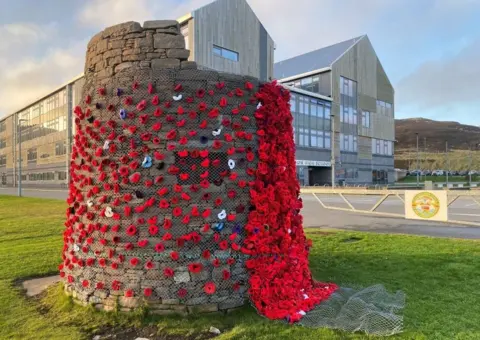
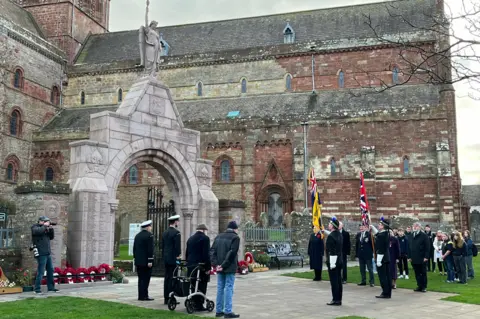
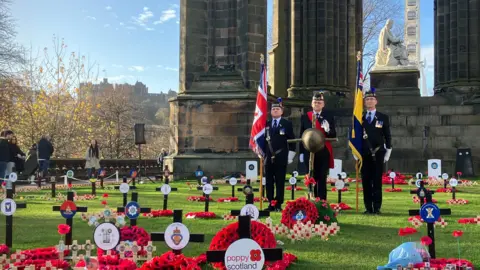
Communities around Scotland had memorial displays to mark the occasion.
Veterans observed the silence outside Scotland's oldest cathedral - St Magnus Catherdal in Kirkwall, Orkney.
In Shetland a bright red display of poppies decorating the cairn outside Anderson High school in Lerwick was made by pupils, knitters and community groups.
It is thought that 49 former pupils lost their lives in WW1 and about 20 more were killed in WW2.
In Glasgow, a piper led a procession of veterans across the concourse of Glasgow Central railway station.
People gathered in Dundee's City Square at a ceremony of remembrance held on the steps of the Caird Hall.
 HES
HES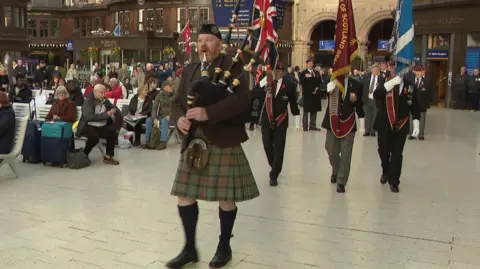
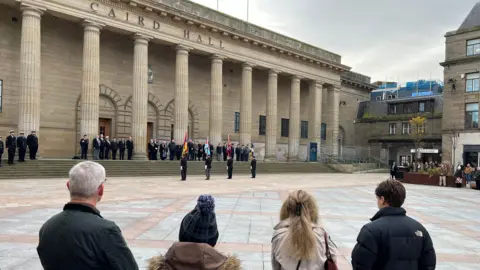
Historic Environment Scotland (HES) ran a Poppy Appeal project encouraging young people to create poppies to be placed on its sites, including Dryburgh Abbey in the Scottish Borders.
They worked with local schools to learn about Anna Guérin, the inventor of the remembrance poppy, and Lady Haig, who ran the first poppy factory in Scotland and was buried at the abbey.
Lady Haig’s paper poppy factory employed men disabled by war, carrying on the spirit of Guérin’s idea – that the poppy should support veterans and the families of the fallen.
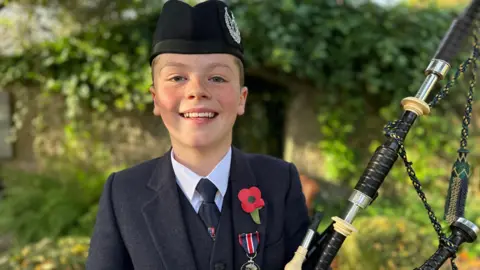
An Armistice Day service was held in Aberdeen at the museum for the Gordon Highlanders - described by Winston Churchill as “the finest regiment in the world”.
Following the silence, a lament was performed by 11-year-old piper Andrew Fagan, who also played in the people's procession at the King's Coronation.
"It was a privilege to play here", he told BBC Scotland.
"I played Flowers of the Forest that's an old funeral march that's in the Scot's guards book."

Among the veterans at the Selkirk war memorial in the Borders was Mike Ashford-Smith, 61, who served with Royal Military Police in Northern Ireland.
He said he was attending “for everyone who lost their lives, and celebrating the ones that came back”.
On Sunday, First minister John Swinney had been among the dignitaries to lay a wreath at the Stone of Remembrance outside Edinburgh City Chambers .
He said those who died in World Wars One and Two had “paid the ultimate price” in order to ensure “the freedoms we all now enjoy”.
The SNP's Westminister leader Stephen Flynn appeared alongside the other leaders of the UK parties and every living former prime minister at London’s Cenotaph commemoration.
King Charles, the Prince and Princess of Wales and other senior royals also appeared at the ceremony.
